Product Owner vs. Product Manager: What’s the Difference and Which Role Should You Fill?
At Big Room, we practice Agile software development. Following this practice, two roles often come up: Product Owner and Product Manager. While they sound similar (and sometimes even overlap) they serve distinct purposes and play different roles in delivering successful products.
By understanding how these roles differ, you’ll get a clearer picture of what it’s like to work with Big Room, and how we use both to drive collaboration, clarity, and success.
At a Glance: The Quick Breakdown
| Role | Focus | Responsibilities |
|---|---|---|
| Product Manager | Strategic & External | Market research, vision, roadmap, business goals |
| Product Owner | Tactical & Internal | Backlog management, sprint planning, team liaison |
The Product Owner: Owning the How and When
The Product Owner lives inside the development process, particularly in Agile teams. Their role is to ensure that the team builds the right product the right way, working closely with the Product Manager to translate their vision into actionable work.
Product Owners are in charge of things like:
Managing the product backlog
Writing user stories and acceptance criteria
Prioritizing features for development
Clarifying requirements for the dev team
Participating in sprint planning, reviews, and retrospectives
In many cases, especially in Agile frameworks like Scrum, the Product Owner is the bridge between the product vision and the technical team. They're present day-to-day, answering questions, adjusting priorities, and ensuring alignment during the build phase.
The Product Manager: Owning the Why and What
The Product Manager is often the voice of the market, aka the industry expert. They are responsible for understanding customer needs, identifying opportunities, and defining a product’s strategic direction. They help answer:
What should we build?
Why does it matter to the user and the business?
How does this fit into our long-term vision?
Product Managers spend their time doing competitive analysis, working with stakeholders at their company, defining product roadmaps, and aligning teams around a shared product vision. They think about go-to-market strategies and feature prioritization based on customer and business value.
Product Management at Big Room Technologies
It’s common for one person to wear both the Product Owner and Product Management hats. But as products grow more complex, separating these roles can bring a lot of clarity and focus to a project.
We believe that no one knows your industry better than you do—you may just need a little help turning your vision into an actionable development plan. That’s why we integrate our clients into our project teams as Product Managers and pair them with a Product Owner that can help with the technical execution 🤝. The more immersed you are in the day-to-day creation of your software, the more confident we can all be about the finished product.
Final Thoughts
Product Ownership and Product Management are two sides of the same coin, with one focused on how and when, and the other on the what and why. Both roles are crucial to building products that not only function well but deliver real value to users and the business.
Need help clarifying your product strategy and building the right solution? We’re ready to partner with you. Let’s think big and build something great together.
Initial consultations are always free! Schedule a time to speak with a Customer Representative today.

